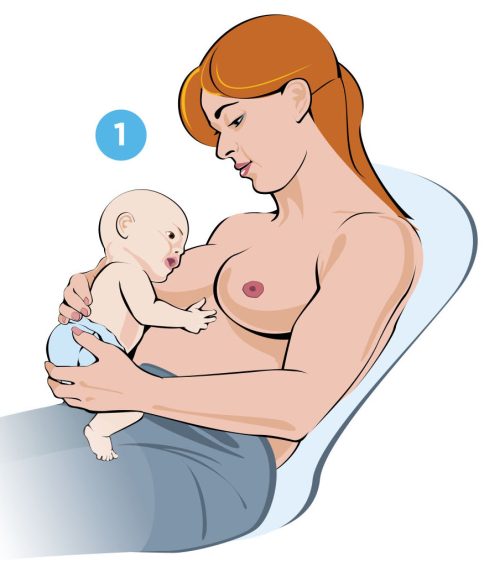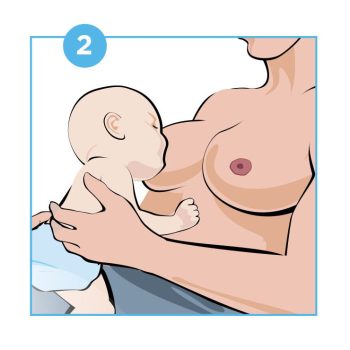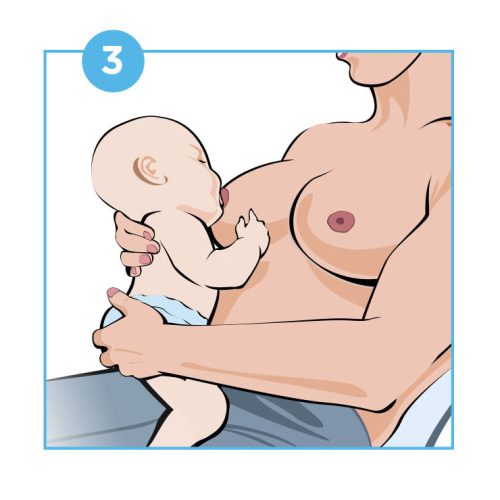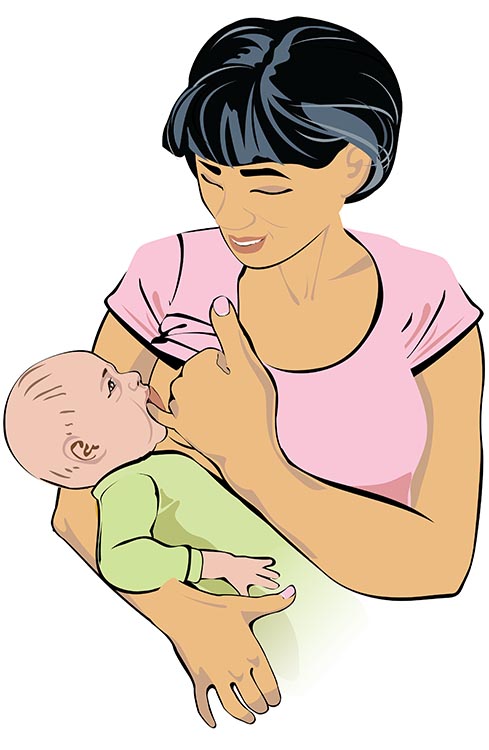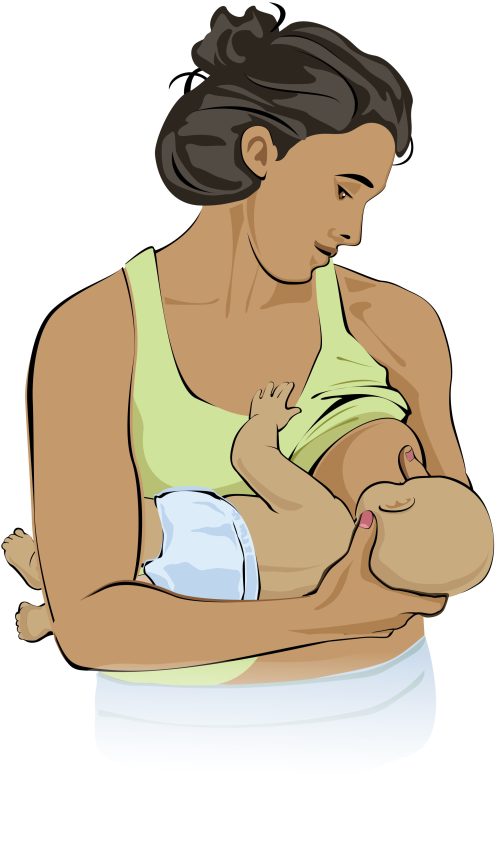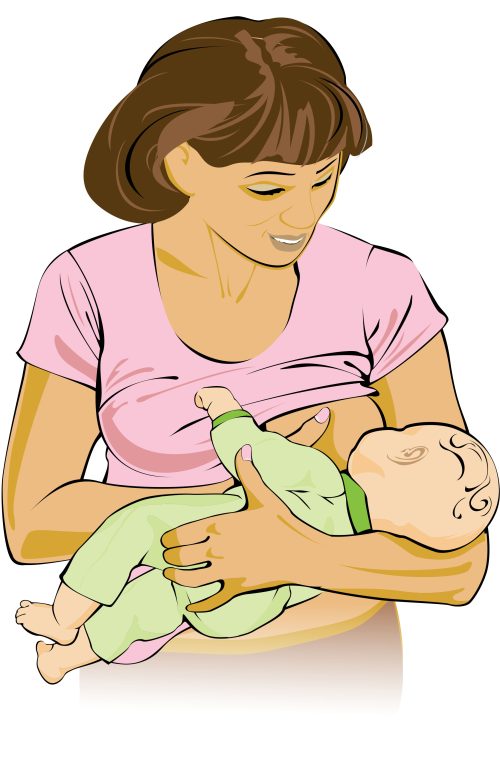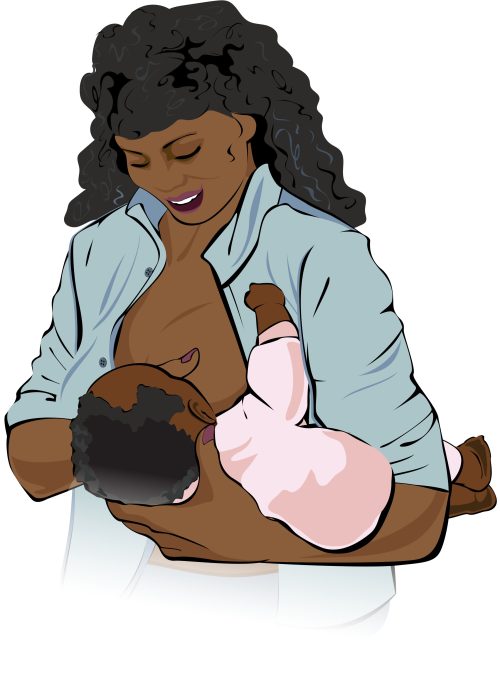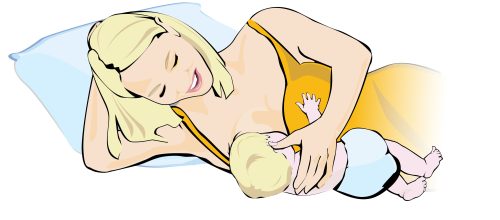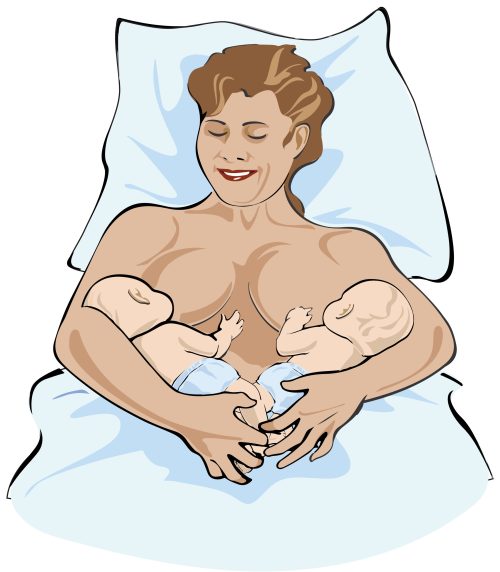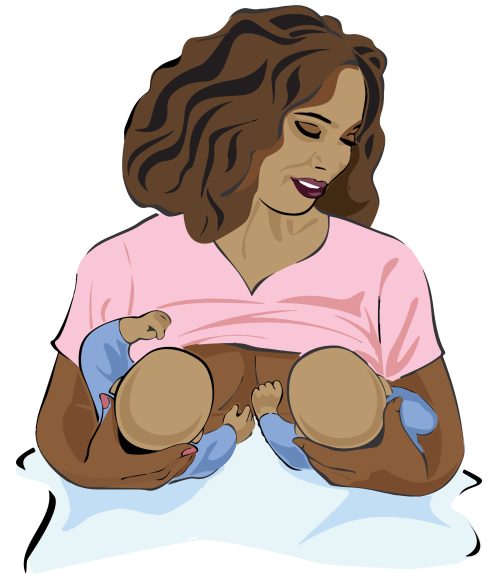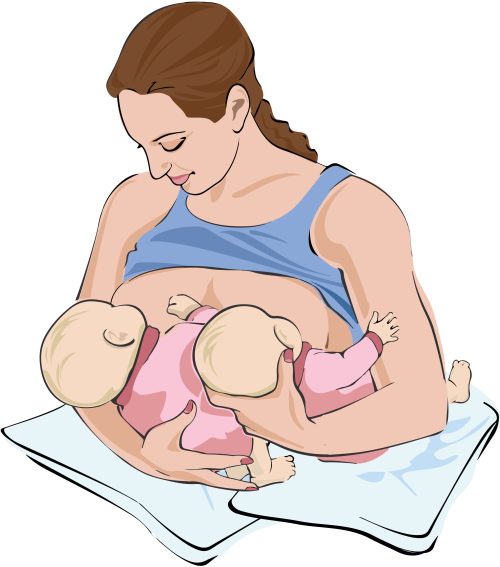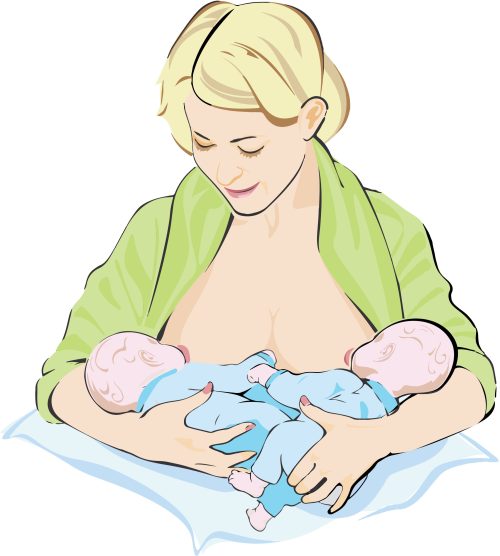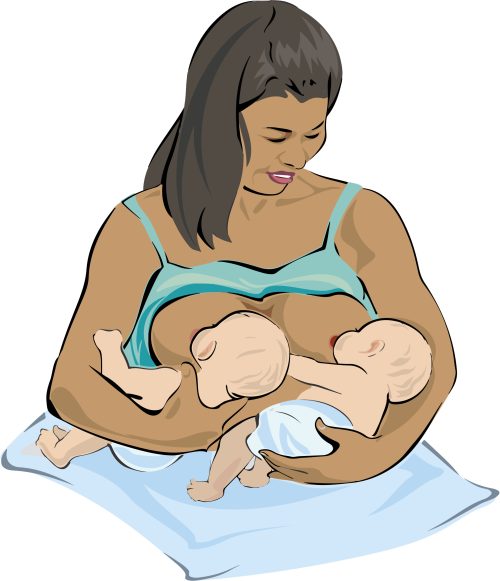Toronto Public Health offers breastfeeding support by telephone, video calls and/or in-person breastfeeding clinic appointments. If you would like a Public Health Nurse to contact you to help with breastfeeding and/or coping after having a baby, please complete this
online form.
Try breastfeeding immediately after birth. Your baby is awake and ready to learn how to breastfeed during this time. Breastfeeding early will also help you to make more milk.
The first hours of snuggling skin-to-skin help you and your baby bond and get to know each other.
Most babies will breastfeed at least eight times in 24 hours (day and night).
If you experience difficulty with breastfeeding, visit a free breastfeeding clinic.
Hold Your Baby Skin-to-Skin
The first hours of snuggling skin-to-skin help you and your baby bond and get to know each other. Hold your baby belly-down on your chest or tummy immediately after birth. Keep cuddling skin-to-skin as often as possible in the months after birth. The benefits for bonding and breastfeeding continue long after that. Safe skin-to-skin is also better for babies born prematurely or by Caesarean birth.
Safe Skin-to-Skin is Easy. Here’s How:
- Take off your baby’s blankets and clothing. Leave diaper on
- Move clothing away from your chest and tummy
- Hold your baby, facing you, against your chest or tummy
- You can put a blanket over you and your baby
- Enjoy the closeness and bonding with your baby
- If you haven’t held your baby skin-to-skin yet, start now! It’s not too late
Benefits of Holding Your Baby Skin-to-Skin
Babies:
- Breastfeed better
- Cry less and are calmer
- Stay warmer
- Enjoy more comfort from you
- Have better blood sugar levels
- Are protected by some of your good bacteria
Parents/Caregivers:
- Breastfeed more easily
- Learn when baby is getting hungry
- Bond more with baby
- Gain confidence and satisfaction caring for baby
Breastfeeding
- Your baby is more likely to have a successful first breastfeed
- Your baby may breastfeed sooner and longer
- You will make more breast milk
- Helps your baby breastfeed when sleepy
Family and Skin-to-Skin
- Your family members can also spend skin-to-skin time with your baby. If you have a partner, plan safe skin-to-skin time together with your baby. It’s a great way for you and your partner to spend time together and bond with your baby.
Safe Sleep
Babies under six months old should be placed on their back in a crib or cradle close to your bed when you are ready to sleep. It is important that cribs and cradles meet current Canadian safety regulations. Learn more about safe sleep for your baby.
Video: Admission to Postpartum. Keeping Your Baby Skin-to-Skin (02:40). Reproduced by permission of Healthy Families BC
Baby-Led Latching
Baby-led latching is a natural and simple way for your baby to find your breast.
It is helpful when your:
- Baby is learning to breastfeed
- Baby is not breastfeeding well
- Nipples are sore/painful
Here’s How
- Start when your baby is calm.
- Sit comfortably and lean back a little.
- Hold your baby skin-to-skin (tummy to tummy) on your upper chest and between your breasts.
- Your baby will start moving their head up and down looking for your breast (this may look like bobbing or pecking).
- Support your baby’s neck, shoulders, and bottom with your arm and hand while they move towards your breast.
- Once your baby is latched, you and your baby can find a comfortable position.
- Your baby will:
- find your nipple
- push their chin into your breast
- reach up with an open mouth
- latch onto your breast
- It may help to bring your baby’s bottom close to your body and/or give support to your baby’s back and shoulders.
Your Baby's Latch
Having a good latch will help you make enough breast milk and help your baby to breastfeed well. It will also help prevent pain when breastfeeding.
Step 1
Get comfortable and find a breastfeeding position that works well for you.
Step 2
Hold your baby skin-to-skin, your tummy to baby’s tummy.
Step 3
Baby is well supported with your hand behind their shoulders, supporting their neck, not their head. Baby’s hands can remain free to explore your breasts and assist with latching.
Step 4
Face your baby’s nose to your nipple. Baby can lick and search for your nipple.
Step 5
With baby’s head slightly tilted back, bring baby in with their chin touching your breast first and wait for a wide open mouth.
Step 6
Breast sandwich: You may support and shape your breast by putting your fingers on one side of your breast, thumb on the other and squeezing your breast from top to bottom or side-to-side to get more breast tissue into your baby’s mouth.
Video: Latching Your Baby (03:35). Reproduced by Permission of Healthy Families BC
Breast Compressions
Breast compressions during feeding may encourage your baby to suck more effectively. Use breast compressions during breastfeeding when your:
- Baby is not effectively sucking and swallowing
- Breasts are not softening
- Baby needs more breastmilk
To do breast compressions:
- Hold your breast with fingers on one side, thumb on the other, away from the areola.
- Gently squeeze the breast when your baby’s sucking slows down.
- Do not press so hard that it hurts your breast.
- Release the compression when your baby stops sucking. If your baby does not start sucking again, squeeze a different area of the breast.
Video: 2 Day Old (02:15). Reproduced by permission of Breastfeeding Inc.
Unlatch Your Baby
Often babies will come off the breast on their own and do not need to be unlatched.
If you need to unlatch baby, you can break the suction as follows:
- Gently insert a clean finger into the corner of baby’s mouth and between the gums.
- You may also gently pull down on the baby’s chin to unlatch.
- Either way, allow the nipple to gently come out of the baby’s mouth. Pulling the nipple out of the baby’s mouth while latched can cause nipple damage.
Breastfeeding Positions
There are many different positions for breastfeeding. Whatever position you prefer, your baby should be well-supported, allowing for a deep latch and ease of swallowing. Choose a breastfeeding position that allows you to be relaxed and comfortable.
Here are some breastfeeding position that may work for you and your baby.
Cross Cradle Position
This position works well for:
- parents and babies who are learning to breastfeed
- babies who are full term, premature and small or have low muscle tone
Cradle Position
This position works well:
- when you are comfortable with breastfeeding and baby is latching well
Football Position
This position works well if you:
- have a Caesarean birth
- have difficulty maintaining a latch
- have a premature or small baby
- have baby with low muscle tone, weak rooting reflex or suck
- have large breast
- have sore nipples
- feeding twins at the same time
Side-Lying Position
This position works well if you:
- find it too painful to sit
- want to rest when you breastfeed
- had a Caesarean birth
- easy to learn
Video: Breastfeeding Position (04:14). Reproduced by permission of Healthy Families BC
Breastfeeding Positions for Multiples
During your hospital stay, learn to breastfeed one baby at a time to ensure each baby learns how to latch effectively. Once you are comfortable latching and feeding babies individually, it is possible to learn to breastfeed two babies at one time. This will take some time and patience to learn.
V-Hold
This position works well if:
- nighttime feedings
- anytime to encourage baby-led latching
Double Football Hold
This position works well if:
- you had a Caesarean birth and avoid pressure on the incision
Combination Cradle/Football Hold
This position works well if:
- one or both babies have difficulty latching on
Criss-Cross or Double-Cradle Hold
This position works well if:
- you are comfortable with breastfeeding
- your babies are latching well
- your babies are alert and awake
Parallel Hold
This position works well for:
- one or both babies have difficulty latching on

